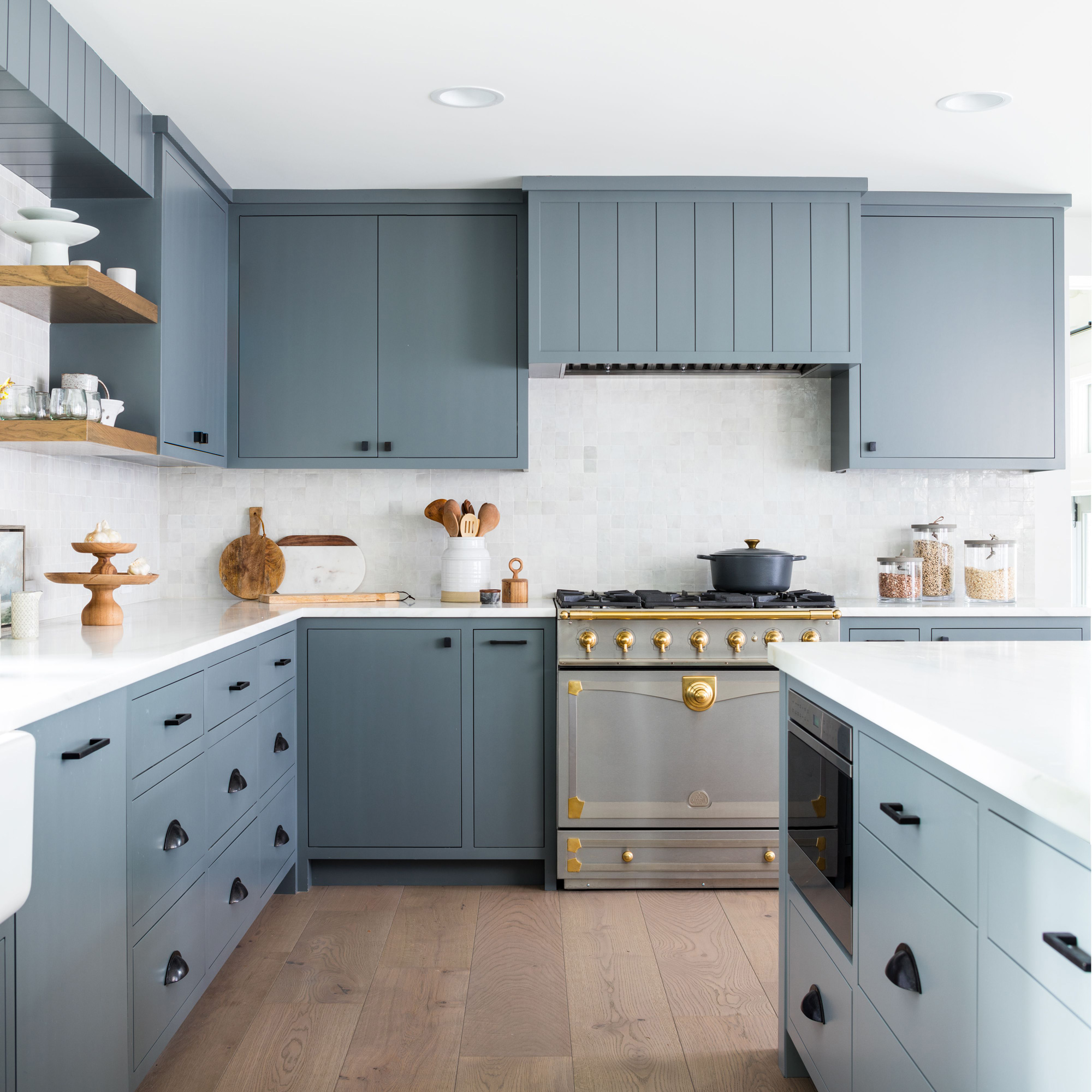Homeowners often face industry-specific terms when embarking on a kitchen renovation or selecting new countertops. Understanding these can be crucial in making informed design, materials, and installation decisions. This article aims to demystify the jargon, clearly defining common kitchen countertop terms.
Table of Contents
ToggleQuartz Countertops
Quartz countertops are man-made, engineered from natural quartz combined with resins and pigments. They are known for their durability, non-porous surface, and wide range of colors and patterns.
Granite Countertops
Granite is a natural stone countertop option, popular for its unique grains, colors, and durability. It’s quarried in large slabs and requires sealing to prevent staining.
Marble Countertops
Marble is a natural stone with distinctive veining and a high-end look. It’s softer than granite and quartz, making it more susceptible to scratches and etching.
Laminate Countertops
Laminate countertops are made by bonding a thin layer of laminate material over a particleboard or MDF core. They are budget-friendly and come in a variety of designs.
Solid Surface
This is a man-made material typically composed of acrylic or polyester resins and mineral fillers. It offers seamless installation and a wide array of colors and patterns.
Edge Profiles
The edge profile refers to the shape of the countertop’s edge. Common types include beveled, bullnose, ogee, and square.
Seams
Seams are the lines where two countertop pieces join together. Professional installers try to match the seams as closely as possible for a uniform look.
Overhang
Overhang is the portion of the countertop that extends beyond the base cabinets. Standard overhangs provide extra space and aesthetic appeal.
Undermount Sink
An undermount sink is installed beneath the countertop, creating a seamless look and easier cleanup.
Joints
Joints are the points where two pieces of the countertop are adjoined. Properly sealed and constructed joints are crucial for durability and aesthetics.
Honed Finish
A honed finish refers to a matte or low-gloss surface finish on a stone countertop, giving it a more natural look.
Polished Finish
This high-gloss finish enhances the countertop material’s color and pattern and offers a reflective surface.
Cabinets
Cabinets are storage units in a kitchen, often made of wood or synthetic materials. They play a crucial role in the kitchen’s functionality and aesthetics, influencing the choice of countertop style and color.
Vanities
In the context of kitchens and bathrooms, vanities refer to the combination of the sink and the storage around it. Like countertops, they are central to the design and functionality of the space.
Kitchen Shapes
U-Shape:
A kitchen layout with counters along three walls forming a U.
L-Shape:
A layout where countertops are placed along two perpendicular walls, forming an L. Both shapes affect countertop selection and placement.
Backsplash
A backsplash is the vertical extension of the countertop, usually made of tile, stone, or other materials. It protects the wall from splashes and adds a decorative element to the kitchen.
Island
A kitchen island is a freestanding countertop, often in the center of the kitchen, providing additional workspace, storage, and sometimes seating. The choice of countertop material for the island can complement or contrast with the main counters.
These additional terms enhance the understanding of how various elements in the kitchen interplay with the countertops, contributing to the overall design and functionality.
Kitchen Appliances
- Range/Oven: A combination of a stove and oven, crucial for cooking. Placement can influence countertop layout.
- Refrigerator: Size and style (like built-in or freestanding) can impact the kitchen’s layout and countertop space.
- Dishwasher: Often integrated near the sink, affecting countertop design and space allocation.
- Microwave: Can be countertop or built-in, influencing countertop space planning.
Including these appliances provides a more comprehensive view of how kitchen countertops interact with other key components in kitchen design, ensuring a harmonious and functional space.
Conclusion
Understanding these terms can significantly ease the process of selecting and discussing kitchen countertops. With this knowledge, homeowners can confidently navigate through their kitchen renovation projects, ensuring they achieve the desired outcome in both style and functionality.
